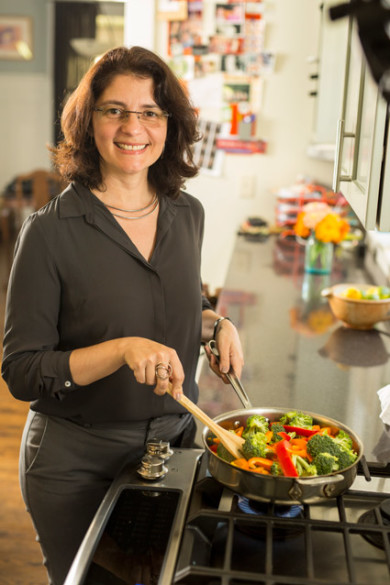
Growing up in Rio de Janeiro, Suzana Herculano-Houzel was surrounded by books. “My parents were always reading,” she recalled, noting that her father is an economist and her mother is a sociologist. “They encouraged me to become what I wanted to be, a scientist, even though that was not, and still is not, a sensible career choice in Brazil.”
Herculano-Houzel majored in biology and genetics at the Federal University of Rio de Janeiro, then earned a master’s degree from Case Western Reserve University in Cleveland, Ohio. There she discovered an interest in neuroscience, which she pursued at the Max Planck Institute for Brain Research in Frankfurt, Germany, and at Pierre and Marie Curie University in Paris, where she got her Ph.D.
The newly minted neuroscientist found describing scientific research for a lay audience easy and enjoyable, so she took a science communicator job at the Museum of Life in Rio, followed by a faculty position at her alma mater, the Federal University. These experiences led her to an important realization: Although neuroscientists were doing highly innovative research, they still did not know some basics, such as how many neurons there are in the brains of different species, including humans.
Herculano-Houzel’s work at the bench gave her an idea for how to answer that question—take brain tissue chunk by chunk, break down the cells to create a “brain soup,” apply fluorescent tags to the nuclei floating in the soup, and count them.
After successfully developing and testing the technique on rodent brains—from mouse to capybara—she began a close and productive collaboration with Vanderbilt Distinguished Professor of Psychology Jon Kaas to apply it to a number of different primate brains. Then she produced the first accurate count of the number of neurons in the human brain—86 billion, making it simply an enlarged primate brain. Kaas and Herculano-Houzel also discovered that great apes have fewer neurons than humans despite their larger bodies.
These results raised the question, “[rquote]What is different about humans that allowed them to evolve brains with so many neurons, which large apes can’t afford?”[/rquote] Herculano-Houzel came up with a simple but novel answer: Thanks to the invention of tools to cut, chop and crush food, and later the controlled use of fire to cook, our ancestors alone were able to afford enough calories to feed their increasingly larger brains.
“Our big brains are very costly. They use 25 percent of all the energy the body needs each day,” she said. “Cooking allowed us to overcome an energetic barrier that restricts the size of the brains of other primates.” Herculano-Houzel described her reasoning in the popular book The Human Advantage (MIT Press), published last March.
View the complete list of new university faculty for 2016-17.
View the complete list of new medical faculty for 2016.